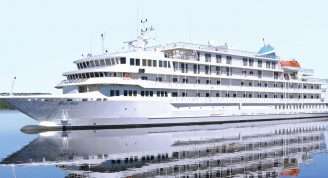Description
This unique expedition crosses the Arctic Circle and includes the isolated and pristine Wrangel and Herald Islands and a significant section of the wild North Eastern Siberian coastline. It is a journey only made possible in recent years by the thawing in the politics of the region and the retreat of summer pack ice in the Chukchi Sea. The very small distance between Russia and the USA along this border area was known as the Ice Curtain, behind which, then and now, lies one of the last great undiscovered wilderness areas in the world.
The voyage journeys through the narrow Bering Strait, which separates Russia from the United States of America, and then travels west along the Chukotka coastline before crossing the De Long Strait to Wrangel Island. There we will spend four to five days under the guidance of local rangers on the nature reserve. Untouched by glaciers during the last ice age, this island is a treasure trove of Arctic biodiversity and is perhaps best known for the multitude of Polar Bears that breed here. We hope to catch many glimpses of this beautiful animal. The island also boasts the world’s largest population of Pacific Walrus and lies near major feeding grounds for the Gray Whales that migrate thousands of kilometres north from their breeding grounds in Baja, Mexico. Reindeer, Musk Oxen and Snow Geese can normally be seen further inland. A visit to massive bird cliffs on nearby Herald Island is also planned. The ‘mammoth steppe’ vegetation complex, a rich and diverse relic from the Pleistocene epoch nurtures over 400 plant species and never fails to astound visitors with its sublime beauty. The number and type of endemic plant species, the diversity within plant communities, the presence of relatively recent mammoth tusks and skulls, a range of terrain types and geological formations in the small geographical space are all visible evidence of Wrangel’s rich natural history and its unique evolutionary status within the Arctic.
The human history of Wrangel Island is fascinating on its own. Highlights include a 3,400 year old Paleo Eskimo camp in Krassin Bay, controversy over discovery and ownership of the island, the amazing story of the survivors of the Karluk, Ada Blackjack the heroine of the island, the Soviet occupation and militarisation and, more recently, the establishment of this world class nature reserve. A host of similarly enthralling stories hail from several optional landings along the northern coasts of Chukotka. Our expert expedition team will take you on guided walks, Zodiac cruises and provide lectures to help you better understand and appreciate this unique High Arctic landscape.

















